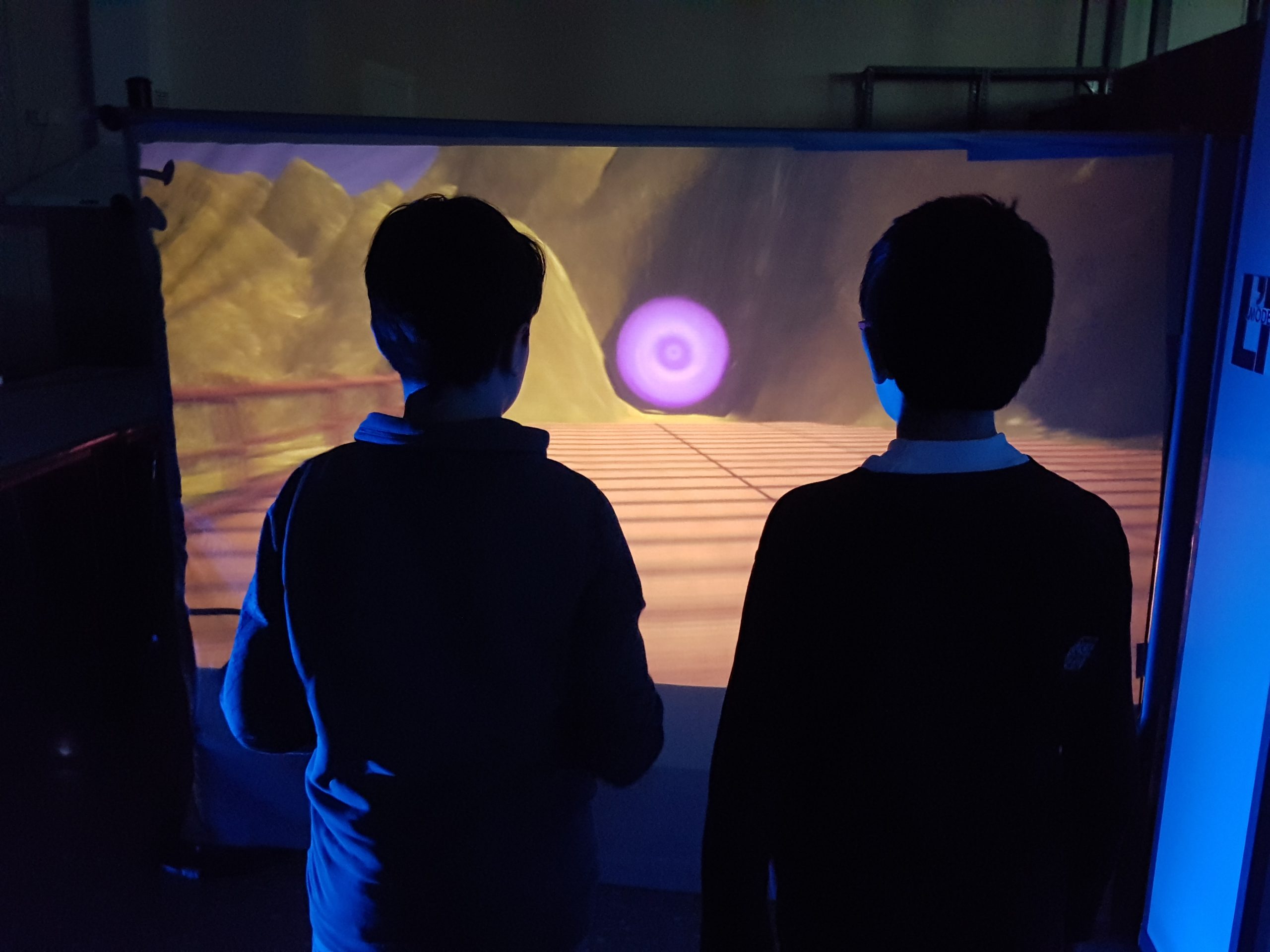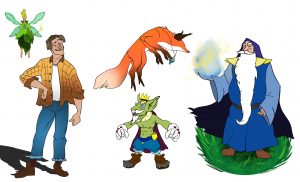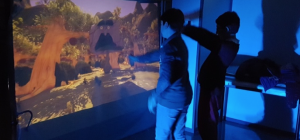
From December 2015 to May 2018, I have been collaborating with Plàudite Teatre – Arts Escèniques de Proximitat in the project Magical Movements. The main goal was to explore novel co-design methods with and for children for Full-Body interactive experiences. Therefore, I particularly focused on techniques based on theatre practise that promote embodied awareness.
 The potential of these techniques was explored in the context of the design of an interactive experience focusing on the Shakespeare’s theatre play “A Midsummer Night’s Dream”. The play describes the unstable balance between the worlds of magic and reality. Twelve children between 10 and 12 years and two theatre teachers of the school participated in the co-design process. The goal of the interactive experience was to contextualize the core concepts of the play and to facilitate users to better understand children’s interpretations around the values and worldviews arising in the narrative.
The potential of these techniques was explored in the context of the design of an interactive experience focusing on the Shakespeare’s theatre play “A Midsummer Night’s Dream”. The play describes the unstable balance between the worlds of magic and reality. Twelve children between 10 and 12 years and two theatre teachers of the school participated in the co-design process. The goal of the interactive experience was to contextualize the core concepts of the play and to facilitate users to better understand children’s interpretations around the values and worldviews arising in the narrative.
A short overview of the project and a preliminary prototype using these techniques has been presented by Televisió L’Hospitalet. You can watch the report and an interview with the co-design team here (the video is in Catalan, for the English version, please activate the subtitles in the youtube settings):
Results
The outcomes of the project were the definition of five embodied co-design techniques for children: Signifying Space Technique, Situated Performance Technique, Small-Scale Prototyping, Body Shadows Technique and Group Environment Technique. A full decription of the embodied design techniques used can be found here.

Our design team developed a mid-tech prototype that was tested by the same children and presented in May 2018 during the final presentations of the summer course in the theatre school.
The results of this project also contributed to the development of the FUBImethod aimed at helping interaction designers in Full-Body Interaction to guide intergenerational teams (children, designers, topic experts, etc.) and their design sessions with a number of techniques to foster body awareness and making the body be the focus and protagonist during the design.
Related Publications:
Marie-Monique Schaper and Narcis Pares. (2021). Co-design Techniques for and with Children based on Physical Theatre Practice to promote Embodied Awareness. ACM Trans. Comput.-Hum. Interact. 28, 4, Article 22 (July 2021), 42 pages. DOI:https://doi.org/10.1145/3450446A
Marie-Monique Schaper, Ole Sejer Iversen, Laura Malinverni, and Narcis Pares. (2019). FUBImethod: Strategies to engage children in the co-design of Full-Body interactive experiences. International Journal of Human-Computer Studies, 132: 52-69. https://doi.org/10.1016/j.ijhcs.2019.07.008
Marie-Monique Schaper and Narcis Pares. (2016). Making sense of Body and Space through Full-Body Interaction Design: A case study. In Proceedings of the 15th International Conference on Interaction Design and Children (IDC ’16). ACM, New York, NY, USA. http://dx.doi.org/10.1145/2930674.2935992
See conference poster IDC’16